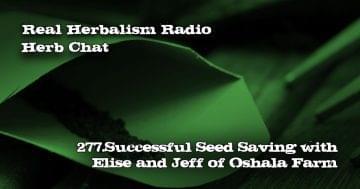I finally got my hands on some Cacao beans. There’s a reason why Carl Linnaes, the Swedish botanist of the 1700s who gave this beautiful tree her Latin name, Theobroma Cacao, chose to call her “Food of the Gods.” For thousands of years, mankind has tended Cacao, harvested her fruits, made wine and, even better, chocolate from her seeds. We’ve killed and traded and enslaved one another just to possess her. As I held those prescious dried beans in my hands, I felt through and through why the ancient Mayans, Toltecs, and even Aztecs told stories of Cacao coming to us as a gift from the Gods.
Considering how much work it is to grow Cacao trees, then how much more to just reach the nib stage, I fully understand why ancient Mesoamerican cultures valued Cacao beans so highly. It takes five or six months for Cacao trees to move from pollinated bloom to fully ripened pod. And, of the thousands of blossoms on any tree, only ten percent or so of them will yield beans. Through the whole growing process, farmers watch and tend their trees carefully, too. Cacao trees are disease prone in the plantation environment. I don’t know if they fare better in their wild, natural habitat or not. My guess is yes, so long as we haven’t encroached on that habitat and weakened the forest around them. They’re picky, requiring only tropical understory conditions: Hot, Humid, Shady, Protected. There’s a narrow band of land on this earth Cacao can call home, and a select group of people who know how to tend her right.

The two pounds of dried Arriba Nacional beans that made it to my doorstep are the fruits a year’s worth of work on the part of one tree. Well, mine came from a farm in Ecuador, so probably they aren’t all from the same tree, but they represent roughly the total harvest from a single Cacao tree, assuming she’s been well-cared for and content with her environment all year round. The farmers harvested the pods by hand, taking care not to cut the cushiony spot on her trunk or branches from which the blooms and pods grow or to cut the neighboring buds, pods, or blooms. They split the pods open and scooped out the seeds along with the white, pulp that cushions the seeds, laid them out to dry in the sun, and turned them a few times a day for up to a week until they were properly dried. They packed them up and shipped them to a company here in the states who then shipped them to me. That’s a lot of work just to deliver me a couple of pounds of gold, er, I mean Cacao beans.
After I reveled in the delightfully sweet, floral, almost fermented scent of the raw beans, I weighed out my first quarter pound for roasting. The raw beans have a thin, tough skin that is pretty much impossible to peel off before roasting. After about 35 minutes in my oven (275 degrees for 15 minutes, then 300 for 20 minutes), they’d begun to crackle faintly. That’s when I knew they were done. As I transferred them from the roasting pan to a dish to cool, my boy emerged from his room wanting to know what I was making. The scent had filled the house with warmth and goodness.

Once I’d worked off the skins, which peeled off pretty easily once they’d been roasted, and crushed a portion of my roasted beans, I tried my first Cacao infusion. I steeped two tablespoons of crushed beans in a small pot of boiled water. The resulting infusion was far more delightful than I’d expected. I loved it. My man loved it. The boy…well, he still favors Kid’s Favorite Cocoa for the high sugar content, but in my book he doesn’t quite count. His palate is still muddied by cheap candies and adolescent hormones. To me, that first infusion was absolutely Divine. I’m already planning my next, a Mayan-style hot chocolate based on the traditional method for processing roasted Cacao beans.
Other Cacao projects you might like to try:
- Cacao Journey—Use Cacao nibs or ceremonial cacao to aid in your next journey.
- Cacao Pod Rattle—Procure a dried, whole Cacao pod to use as a rattle for Spiritual work.
- Cacao Bean incense—Add a pinch or two of Cacao nibs to your next incense blend to help open your heart chakra and assist in opening to Divine assistance.
-
Cacao infusion: Roasted Cacao Beans ground and infused in Hot Water. Yum!! Cacao cooking—Add a little cacao or unsweetened chocolate to your next polenta, gruel, or grits along with a nip of chili pepper, achote seed, vanilla bean, or fresh flower petals for a royal breakfast, Ancient Mesoamerican style.
- Cacao dreaming–Enlisting Cacao in Dreamwork is a terrific way to open to deeper levels of creative or healing energies. Set a cup of cocoa by your bedside, then when you wake during the night drink it. Or, if you generally don’t wake in the night, drink it before you sleep or before you lay down for a nap by day. The best is to make a cup of Cacao in the traditional or ceremonial style, but if grocery store cocoa or chocolate is the best you can get, give it a try. In either case, take the time to ask the Spirit of Cacao for her help and offer her your gratitude in whatever form makes sense.








